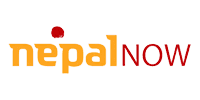-
Places to go
-
Things to do
-
Adventure
Nature
Culture
Wellness
Others
-
-
Festivals & Events
-
Festivals
Event Calendar
-
-
Plan Your Trip
-
Trip Ideas
Travel Details
Book Your Trip
-
- Travel Updates
Hanuman Dhoka Museum
Hanuman Dhoka Museum
Hanuman Dhoka Museum
The Kathmandu Durbar Square, also known as Hanumandhoka Durbar Square, is a historic landmark in Kathmandu that was constructed in 1770. The UNESCO Cultural Site is not far from Jonchhe, a popular hippie hangout from the 1960s to the 1970s.The Durbar Square includes the old royal palaces of Kathmandu's Malla and Shah kings, Kumari Ghar, Taleju temple, Kalbhairav temple, the famous Hanuman Dhoka museum, and several other temples.
The entrance to the palace is guarded by a statue of Hanuman, which was built during the reign of Pratap Malla. The Palace is also named after the Hanuman statue, as "dhoka" means "gate.” The structure, which is covered in red cloth and has an umbrella over its head, dates from the 16th century. The Tribhuvan Museum, located in Kathmandu Durbar Square's Hanuman Dhoka Palace, commemorates the life of King Tribhuvan (1906-1955), who helped free the country from the Rana regime. Rare photographs and paintings of other Shah rulers are on display in the gallery. The late king's personal belongings, such as his bicycle, jeep and photographic equipment, including boxes of Kodak chemicals, are of particular interest. The gallery also includes photographs of the king's funeral. The Mahendra Museum sheds light on the late King Mahendra's life (1955-1972). His personal belongings, such as clothes, statutes, centuries-old artifacts, jewelry, ceremonial attire, and other items, the Hanuman Dhoka museum is a popular tourist destination. Both museums can be visited with a single ticket.
Nepal Tourism Board is a national tourism organization of Nepal established in 1998 by an Act of Parliament in the form of partnership between the Government of Nepal and private sector tourism industry to develop and market Nepal as an attractive tourist destination. The Board provides platform for vision-drawn leadership for Nepal’s tourism sector by integrating Government commitment with the dynamism of private sector.



